

































MIDWEEK UPDATE 8 DECEMBER 2022
Google Banner Ad
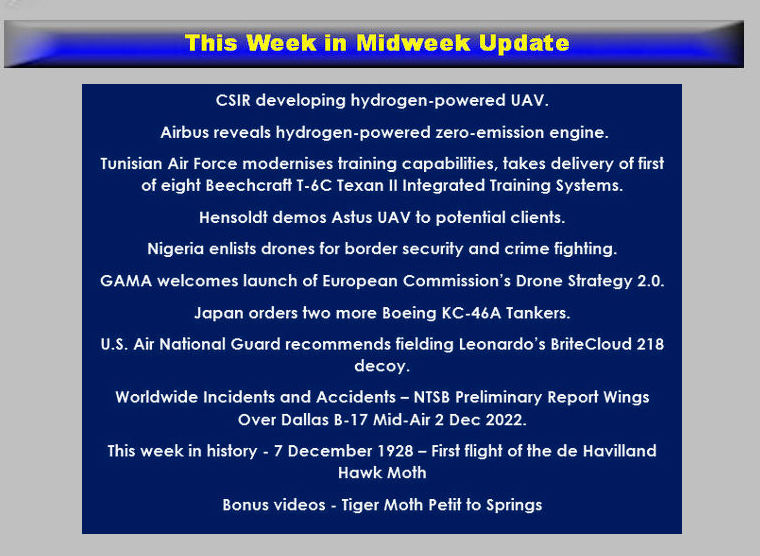


.jpg)





CSIR DEVELOPING HYDROGEN-POWERED UAV

The Council for Scientific and Industrial Research (CSIR) is busy with the development of a hydrogen-powered unmanned aerial vehicle (UAV) using locally developed fuel cell technology to support efforts to decarbonise aviation in South Africa.
South Africa has significant unrealised potential to generate low-cost green hydrogen (green hydrogen does not ultimately release carbon dioxide into the atmosphere, as it uses renewable energy from wind or solar to split water into hydrogen and oxygen). Rheinmetall Denel Munition, for example, in September launched its green hydrogen modular, self-sustaining, renewable de-centralised energy solution that uses solar power to split water.
The CSIR is developing the hydrogen-powered UAV between 2022 and 2026, as part of a roadmap that could lead to the development of fuel cells for hydrogen-powered general aviation aircraft (2026-2029), and hydrogen-power for regional airliners (2029-2034).
The project aims to develop, demonstrate and prove an integrated airborne hydrogen fuel cell propulsion system for UAVs, and license the fuel cell propulsion system to a local entity for qualification, industrialisation, and commercialization. The UAV, which is optimised for hydrogen propulsion, will also be licensed to a local entity for qualification, industrialisation and commercialisation.

The UAV will be of a fixed wing, vertical take-off and landing (VTOL) design, with multiple rotors for vertical flight. Although hydrogen fuel cells are initially more expensive than alternative energy sources like fossil fuels or batteries, they are quiet and are much more suitable for long endurance missions than batteries.
The aircraft will be aimed at both civil and military applications, including long endurance patrol, long range monitoring, and long range surveillance, with a reconfigurable payload bay capable of carrying up to 5 kg.
Endurance is intended to be greater than ten hours and maximum operating altitude nearly 5 000 metres above sea level. The aircraft will be designed to operate in difficult conditions, including 60 km/h winds, temperatures of more than 45 degrees Celsius, and 1-5 mm/h of precipitation.
After initial electric (battery)-powered flight testing, the locally developed fuel cell will be integrated into the UAV and will undergo flight testing and demonstrations.
The CSIR is getting funding from the South African government's Department of Science and Innovation and reports strong interest in the project, including from the military and local and international operators. Several local universities and companies have been in discussion with the CSIR to partner on the project.
The project will benefit from work done by Hydrogen SA, which has amongst others developed a portable on-site hydrogen generator that can produce 2.5 kg of hydrogen a day. The system weighs 850 kg. Hydrogen SA has also developed a storage vessel weighing 1.7 kg and able to store 4.7 litres of hydrogen.
Green hydrogen is under the spotlight this week as Infrastructure South Africa (ISA) hosts the inaugural South Africa Green Hydrogen Summit (SAGHS) in Cape Town, which runs from 28 to 30 November. The Summit showcases the country's offering as a large-scale, low cost, world class green hydrogen production hub and total value chain investment destination.
South Africa is one of the founding members of the Africa Green Hydrogen Alliance (AGHA) which seeks to promote continental green hydrogen cooperation.
The Summit builds on the opportunities identified during the Sustainable Infrastructure Development Symposium South Africa (SIDSSA) of 2021. One of the highlights of the symposium was South Africa's emergence as a potential global exporter of green energy with major investment support from Sasol and Anglo-American giving a boost to the country's green hydrogen projects.
Green hydrogen was further identified as a "big frontier" in the Country Investment Strategy, indicating that it represents both current and future growth and investment potential for South Africa.

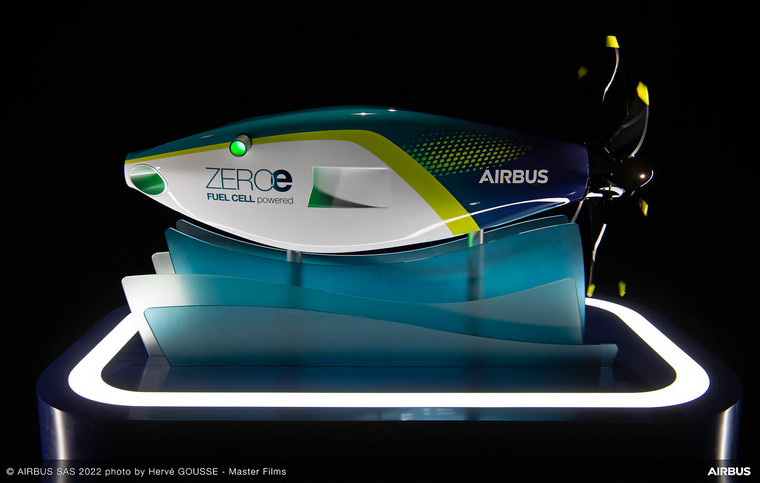
Airbus has revealed that it is developing a hydrogen-powered fuel cell engine. The propulsion system is being considered as one of the potential solutions to equip its zero-emission aircraft that will enter service by 2035.
Airbus will start ground and flight testing this fuel cell engine architecture on-board its ZEROe demonstrator aircraft towards the middle of the decade. The A380 MSN1 flight test aircraft for new hydrogen technologies is currently being modified to carry liquid hydrogen tanks and their associated distribution systems.
"Fuel cells are a potential solution to help us achieve our zero-emission ambition and we are focused on developing and testing this technology to understand if it is feasible and viable for a 2035 entry-into-service of a zero-emission aircraft," said Glenn Llewellyn, VP Zero-Emission Aircraft, Airbus. "At scale and if the technology targets were achieved, fuel cell engines may be able to power a one hundred passenger aircraft with a range of approximately 1,000 nautical miles. By continuing to invest in this technology we are giving ourselves additional options that will inform our decisions on the architecture of our future ZEROe aircraft, the development of which we intend to launch in the 2027-2028 timeframe."
Airbus identified hydrogen as one of the most promising alternatives to power a zero-emission aircraft, because it emits no carbon dioxide when generated from renewable energy, with water being its most significant by-products.
There are two ways hydrogen can be used as a power source for aircraft propulsion. First is via hydrogen combustion in a gas turbine, second, by using fuel cells to convert hydrogen into electricity in order to power a propeller engine. A hydrogen gas turbine can also be coupled with fuel cells instead of batteries in a hybrid-electric architecture.
Hydrogen fuel cells, especially when stacked together, increase their power output allowing scalability. In addition, an engine powered by hydrogen fuel cells produces zero NOx emissions or contrails thereby offering additional decarbonisation benefits.
Airbus has been exploring the possibilities of fuel cell propulsion systems for aviation for some time. In October 2020, Airbus created Aerostack, a joint venture with ElringKlinger, a company with over 20 years of experience as both a fuel cell systems and component supplier. In December 2020, Airbus presented its pod-concept which included six removable fuel cell propeller propulsion systems.

TUNISIAN AIR FORCE MODERNISES TRAINING CAPABILITIES, TAKES DELIVERY OF FIRST OF EIGHT BEECHCRAFT T-6C TEXAN II INTEGRATED TRAINING SYSTEMS.

Textron Aviation Defence announced the delivery of the first Beechcraft T-6C Texan II Integrated Training System to the Tunisian Air Force in support of operations at No. 13 Squadron at Sfax Air Base in Tunisia. The Foreign Military Sales (FMS) contract comprises eight T-6C Texan II advanced military training aircraft, in-country field service and logistics support representatives, program management support, interim contractor support for the first year, training for pilots and maintenance professionals, spare engines, spare parts and aircraft support equipment.
"Textron Aviation Defence is honoured the Tunisian Air Force has chosen the world's best and most affordable military trainer - the legendry Beechcraft T-6C Texan II - as its next primary trainer," said Fouad Kasri, Director of Sales & Strategy for Africa and the Middle East, Textron Aviation Defence. "Tunisia is the thirteenth nation to acquire the T-6 and has now taken delivery of the 1,001st T-6 manufactured by our team in Wichita. We are delighted to welcome yet another North African and Mediterranean Allied Nation to the distinguished group of global air forces who rely on the next-generation T-6 Integrated Training System to achieve their pilot training objectives."
Textron Aviation Defence collaborated with the U.S. Air Force Life Cycle Management Center (AFLCMC) and the U.S. Air Force Security Assistance Training Squadron (AFSAT) to support the Tunisian Air Force's modernisation and growth program.
"Becoming a regional leader in military flight training excellence is one of the milestones on the path to achieving our counter-terrorism and border security mission requirements," said General Mohamed Hajjem, the Tunisian Air Force Chief of Staff. "We are grateful to Textron Aviation Defence, AFLCMC and AFSAT for supporting our acquisition of the Beechcraft T-6C Texan II, as well as our efforts to achieve territorial sovereignty and regional stability. This acquisition paves the way for additional bilateral engagements and strengthens our relationship with the United States."
Textron Aviation Defence expects to deliver the second Tunisian Air Force T-6C in late 2022. The remaining six aircraft are slated for delivery in 2023. Training of the initial cadre of pilots began 31 October at Textron Aviation Defence facilities in Wichita, Kansas.
Additionally, the Tunisian Air Force will rely upon TRU Simulation + Training Inc., an affiliate of Textron Aviation Inc, for a suite of training devices and related support. The devices - slated for installation at Sfax Air Base - include a ground-based training system, an operational flight trainer and a computer-based training lab.
About the Beechcraft T-6 Texan II
The Beechcraft T-6 Texan II is the world's premier military flight trainer. To date, the global fleet of 1,001 Beechcraft T-6 Texan II aircraft has surpassed 5M flight hours across 13 nations and two NATO flight schools. With an installed base that more than quadruples its closest competitor, the family of Beechcraft T-6 Texan II aircraft has been the world's number one Integrated Training System (ITS) for more than 20 years.
A vital asset, the T-6 empowers global pilot training across the North Atlantic Treaty Organisation, Flight Training program in Canada, the Euro NATO Joint Jet Pilot Training Program (ENJJPT) at Sheppard AFB, Texas and the U.S. Air Force Aviation Leadership Program as well as the U.S. Air Force, Navy, Marine Corps, Army and Coast Guard, the Hellenic Air Force, the Argentine Air Force, the Israeli Air Force, the Royal Air Force, the Iraqi Air Force, the Royal Canadian Air Force, Mexican Navy, the Mexican Air Force, the Royal Moroccan Air Force, the Colombian Air Force, the Royal New Zealand Air Force, the Royal Thai Air Force and now the Tunisian Air Force.

Guy Martin www.defenceweb.co.za
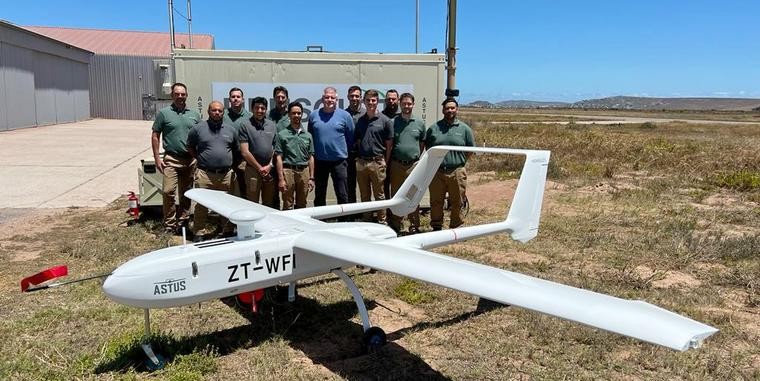
Hensoldt South Africa is holding flight demonstrations of its Astus unmanned aerial vehicle (UAV) in the Western Cape for potential customers and showcasing the capabilities of the aircraft's various sensor payloads.
During demonstration flights, the 30 x optical zoom camera was able to track a golf ball being played at a local golf course from 2.5 kilometres away and could clearly reveal the name painted on the side of a ship 10.5 kilometres out to sea. The MWIR sensor has a 15 x optical zoom while the laser range finder has a 20 km measuring range.
Hensoldt South Africa and Threod Systems recently launched the new light-weight electro optical Argos-8 system, weighing less than 6 kg and offering day and night capabilities for intelligence, surveillance, target acquisition and reconnaissance (ISTAR) missions. This will be fitted to the Astus early next year.
Willie Malan, Manager Unmanned Systems at Hensoldt Optronics, emphasised that while the Astus is a capable platform, its key attribute is its sensor payload. Artificial intelligence and imaging technology have improved tremendously in recent years and this is what Hensoldt is really highlighting with the Astus demonstration. Malan said the 8-inch gimbal's auto tracker was able to detect moving targets - such as sheep walking through a field - and track vehicles moving through bush.
Various flight profiles are being flown around Saldanha, out to ranges of more than 100 kilometres and altitudes of up to 16 000 feet (maximum communications range is 200 km). The aircraft is demonstrating its utility in roles from traffic monitoring to maritime surveillance, fisheries patrol, counter-poaching etc.
Numerous local and international potential customers are attending the demonstration, including several "serious prospective buyers." Attendees are from both civil and military institutions, including non-governmental organisations and city councils. Other flight demonstrations will take place early next year.
Malan said that the Astus airframe is production ready and basic gimbals integrated, but Hensoldt is working on adding more and different sensors to the airframe.
In addition to the customer demonstrations and payload development flights, the Astus deployment to Saldanha is also assessing the use of a logistical support container for spare parts supply in the field. Over the last few years of testing the Astus team deployed with a large staff component as part of initial development but for this mission the team was cut down to only the minimum five staff needed.
The Astus was first unveiled in September 2018, by Tellumat and was subsequently acquired by Hensoldt South Africa along with some of Tellumat's other business units. Key features of the medium-size, medium-range UAV are a 5.2-metre wingspan, 115 kg maximum take-off weight; eight hours flight time at 5 000 feet above sea level; and cruising speed of 55-60 knots. The aircraft can carry payloads up to 10 kg.
The modular and portable Ground Control Station (GCS) can be networked to allow control of the Astus by more than one pilot and payload operator geographically separated across the mission area. It consists of an operator control unit (OCU) and Ground Data Terminal (GDT) that offer flight and mission control management of the Astus.

www.defenceweb.co.za

Tethered drones are making life easier for Nigerian law enforcement authorities responsible for border and homeland security as well as anti-crime and anti-terrorism operations.
The UAVs were delivered and training given in Abuja at the beginning of the year and "tethered drones are now deployed daily".
Using Orions, police successfully identified armed terrorist groups thanks to discrete observation and threat detection made possible by the UAVs over an area of several kilometres during 24-hour flights.
"Drones assist Police to monitor active crime scenes, co-ordinate response operations and provide aerial support to responding officers," a Nigerian police spokesman said.
Deployable in minutes and easily transportable, the Orion allows operators to speedily create a discreet checkpoint with a minimal logistic footprint. The Orion can remain on station for 50 hours and thanks to its 100 metre long Kevlar tether, is immune to jamming. Its dual electro-optical/infrared sensor is suitable for day and night missions and has a detection range of 10 km. The UAV has a total take-off weight of 10.5 kg and should the tether fail, can parachute safely to Earth.
Elistair opened an office in Ivory Coast's Abidjan in April 2021 to increase its presence and proximity to West African customers. The company has supplied UAVs to more than 70 countries worldwide from its locations in Africa, France and the United States (US).
The Nigerian police have been expanding their UAV inventory and recently received a small batch of Songar armed unmanned aerial vehicles from Turkey's Asisguard, while larger UAVs are entering Nigerian military service.
Asisguard said the Songar deliveries were concluded on 15 September, but did not reveal further details. In May it was reported by Africa Intelligence that Nigeria had ordered ten Songars.
Unveiled in 2019, the Songar multicopter can be fitted with an assault rifle, 40 mm grenade launcher or 81 mm mortar. It can also be fitted with a day/night camera gimbal and laser range finder. An electronic sight and ballistic calculation module assists with weapon deployment and recoil management.
The Nigerian police are expected to use the Songar against armed gangs and bandits, which have recently caused havoc in several states. The Nigerian Police Force has also recently taken delivery of ALTI Transition UAVs from South Africa.
More recent UAV deliveries to Nigeria include at least four AR-500B shipborne unmanned helicopters from China. It is not yet clear if these will be used aboard Nigerian Navy vessels or from land bases. China is supplying several Wing Loong II, CH-4 and CH-3 aircraft to enhance the Intelligence, Surveillance and Reconnaissance (ISR) as well as strike capabilities of the Nigerian Air Force.
Nigeria's military is also getting Bayraktar TB2 UAVs from Turkey - it has been reported that Nigeria ordered six UAVs and two ground stations. Photos posted online in September showed several of the UAVs on the Baykar factory floor in Nigerian
markings.

The European Commission published their "Drone Strategy 2.0 for a Smart and Sustainable Unmanned Aircraft Eco-System in Europe". This new strategy sets out the framework and key actions in the European Union to support the development of Unmanned Aircraft and their integration into the European airspace, as well as the deployment of piloted electric Urban and Regional Air Mobility operations in and around European cities, municipalities and regions.
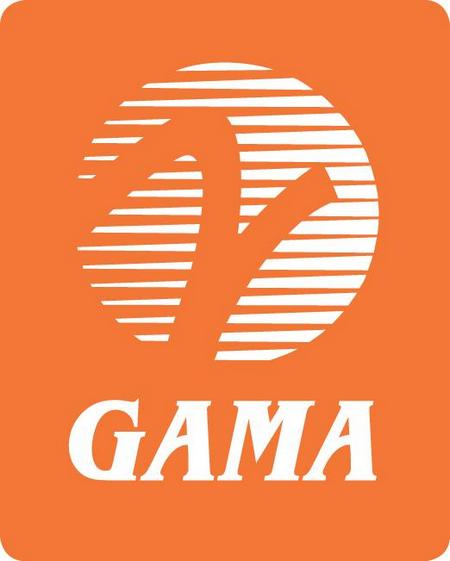
"The latest strategy rightly highlights the important growing market for both cargo and passenger-carrying Urban and Regional Air Mobility (UAM) operations as a key enabler for the sustainable mobility of citizens and goods in the European Union. Several of the flagship actions highlighted in the strategy align with GAMA's goals for the UAM sector, namely airspace integration; risk-based and performance-based regulations for both certification and operations; development of vertiports for operations; workforce and skills development; and engagement with local authorities to support their implementation in Member States. GAMA will continue to work closely with the European Commission, EASA and Member States to make the strategy's vison for 2030 a reality for EU citizens and businesses - Drones and IAM will become a part of the future urban and regional multimodal intelligent mobility ecosystem and the ground and air infrastructures enabling these transport services will be widely deployed and integrated," said Kyle Martin, GAMA Vice President of European Affairs.

"The unmatched versatility and multi-mission capabilities of the KC-46A tanker further support JASDF's air mobility mission," said James Burgess, Vice President and KC-46 program manager. "The growing global KC-46A fleet increases the interoperability advantages for our customers, ensuring mission readiness as well as value for their investment."
Designed to refuel all allied and coalition military aircraft compatible with international aerial refuelling procedures, the proven Pegasus has flown more than 10,000 sorties and is delivering millions of pounds of fuel every month to allied forces around the globe. In addition to refuelling, the KC-46A delivers multi-mission capabilities necessary for the 21st century fleet, including data connectivity and personnel, cargo and aeromedical transportation.
"This additional KC-46A acquisition reinforces the U.S.-Japan security alliance to support security and stability throughout the Pacific region," said Will Shaffer, President of Boeing Japan. "Boeing is proud of our enduring partnership with Japan and we look forward to supporting the nation's KC-46A fleet that will fly for decades to come."
Boeing has delivered 67 KC-46A tankers, including 65 to the U.S. Air Force and two to Japan. Built on the proven 767 airframe that has more than 1,200 delivered-and with more KC-46A aircraft operational globally than any tanker except the Boeing-built KC-135-the Pegasus also provides crucial mission reliability for global customers.
The contract was awarded by the U.S. Air Force through the Foreign Military Sales process. Boeing builds KC-46A aircraft for the U.S. Air Force, the JASDF and other allied customers on its 767 production line in Everett, Washington. In addition, Boeing's Japanese partners produce 16 percent of the KC-46A airframe structure. The JASDF also operates four earlier generation Boeing-built KC-767 aircraft.

The U.S. Air National Guard (ANG) has issued a 'fielding recommendation' for Leonardo's BriteCloud 218 expendable active decoy, tested on US F-16 Fighting Falcon aircraft. This means that the service, which has conducted an extensive testing and live trials campaign with BriteCloud since 2019, is confident that the decoy meets and, in some instances, even exceeds operational requirements, delivering an increased platform protection capability to 4th generation fighter aircraft like the F-16.
Designed and manufactured by Leonardo in the UK, BriteCloud has already entered service with the UK's Royal Air Force. As a world-first technology, BriteCloud has been undergoing evaluation for potential service with U.S. Armed Forces under the Office of Secretary of Defence (OSD) Foreign Comparative Testing (FCT) programme. The fielding recommendation by the ANG is one of the final stages of the programme and gives the green light to BriteCloud 218 as proven effective and fit for operations.
The BriteCloud 218-variant rounds evaluated under the FCT are standard-sized rectangular countermeasures measuring just two by one by eight inches. This means they are compatible with common dispensers including the AN/ALE-47 and are ready to equip other 4th generation fighters such as the F-15, F/A-18, F-16 and A-10 fighters. BriteCloud 218 is also an effective protection capability for smaller un- crewed platforms, with the German Armed Forces successfully trailing the system with target drone aircraft last year.
Leonardo's original BriteCloud 55 decoy (a slightly larger variant, compatible with round 55mm flare dispensers such as those on the Eurofighter Typhoon and Saab Gripen C/D, is used by the UK's Royal Air Force. BriteCloud's unique combination of latest-generation threat protection with extremely low integration costs continues to generate significant international interest and Leonardo is in talks with a number of Air Forces about the capability.


Angola, Luanda: A Lufthansa Airbus A350-941 flight LH575, en route to MŁnchen-Franz Josef Strauss Airport made an emergency landing at Luanda Airport (LAD), Angola, after developing engine issues about three hours and twenty minutes after take-off from Cape Town, South Africa.
Chile, Santiago-Arturo Merino Benitez Airport: A Latam Airlines Airbus A321 sustained substantial damage when it suffered a tail strike on take-off from Santiago-Arturo Merino Benitez Airport (SCL/SCEL), Chile. There were no injuries. An unconfirmed report suggests the airplane was incorrectly loaded.

USA, Monroe County near Aberdeen, MS: Following an inflight fuel exhaustion event an experimental amateur build Breezy Club sustained unreported but apparent minor damage during the ensuing forced landing to open field terrain in Monroe County north of Aberdeen, Mississippi. The sole pilot was not injured during the incident.
Russia, near Alekseyevka, Primorsky Krai: A Russian Airforce Mikoyan MiG-31 with two crew members crashed into a hill near the federal highway, outside the settlement of Alekseeva. The crew managed to eject and survived. According to eyewitnesses of the incident, the plane caught fire while flying.

India, Cochin International Airport: A Spice Jet Boeing 737 MAX 8 with 203 occupants suffered a hydraulic failure while en route from Jeddah to Kozhikode, India. Additionally, the flight crew was told by ATC that pieces of tyre were discovered on the runway after take-off from Jeddah. The flight diverted to Cochin International Airport (COK), where several low passes were flown so the tower controllers could observe the state of the undercarriage. A safe landing with no injuries was made.
USA, Gulf of Mexico, near Venice, FL: A Piper PA-28-151 Cherokee Warrior with three on board crashed into the Gulf of Mexico after take-off from Runway 23 at Venice Municipal Airport, FL (VNC/KVNC). A Woman and a child were found fatally injured. One occupant was at the time of publication missing.


7 DECEMBER1928
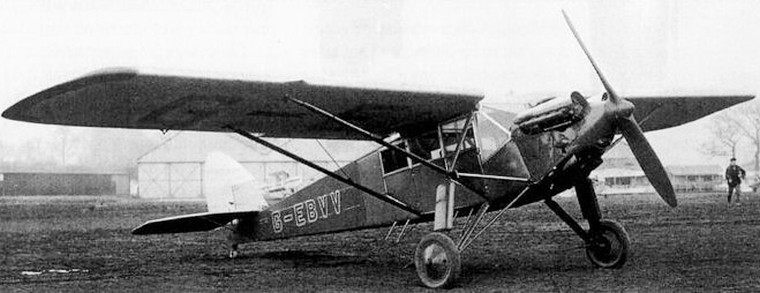
First flight of the de Havilland Hawk Moth
During December 1929 the first aircraft was demonstrated in Canada with both wheel and ski undercarriage. Following trials with the second aircraft on floats, the Canadian government ordered three aircraft for civil use.
A further two were exported to Australia. One of the Australian aircraft, VH-UNW, was used by Amy Johnson to fly from Brisbane to Sydney in 1930 when her De Havilland Moth Jason was damaged. VH-UNW was later sold to Hart Aircraft Service of Melbourne who used it mainly for joy flights.

Tiger Moth Petit to Springs
Google Banner Ad

 |
 |
 Copyright © 2024 Pilot's Post PTY Ltd
The information, views and opinions by the authors contributing to Pilotís Post are not necessarily those of the editor or other writers at Pilotís Post.
Copyright © 2024 Pilot's Post PTY Ltd
The information, views and opinions by the authors contributing to Pilotís Post are not necessarily those of the editor or other writers at Pilotís Post.